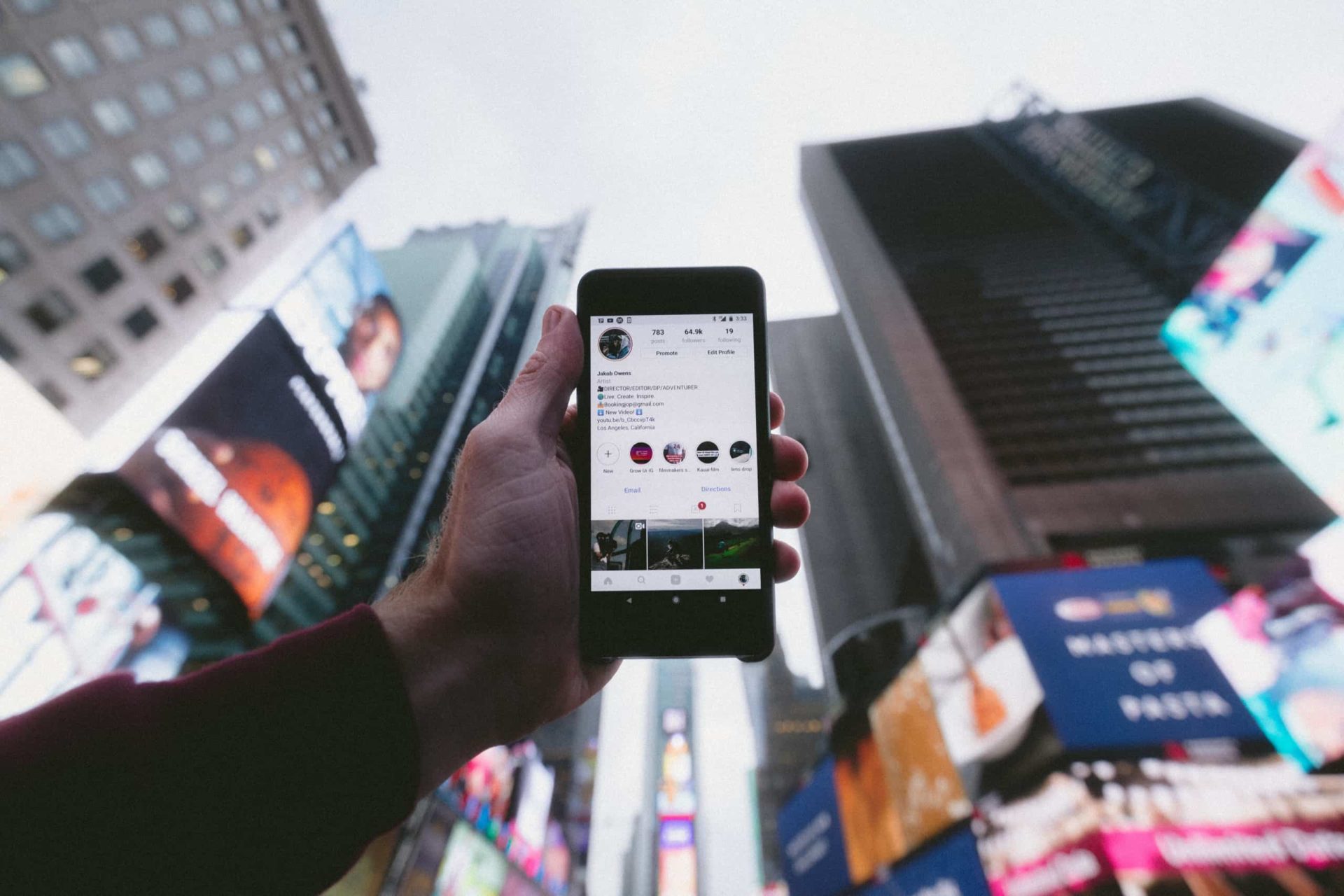Did you know modern influencer marketing began with Santa Clause during the Great Depression? Saint Nick (and his red suit) dominated Coca-Cola’s brand strategy throughout the 1930s. And so they managed to drive sales over Christmas during a pretty miserable time.

In 2005, Paris Hilton was one of the most influential people in America. Seriously, kids. Then the rise of social media began creating divides between regular users. Brands caught on to the leverage some had with their followers and started to send them products in exchange for advertising. This began the trend of influencer marketing on social media.
If your brand has millions to spend on Instagram influencers like Kim Kardashian or Kylie Jenner, more power to you. But for the rest of us? There are cheaper, more effective options. Here’s how to reach out to micro-influencers on social media.
Influencer ranks on social media
When it comes to followers, defining the ranks of influencer accounts varies. Some sources say anything under 100k is a micro-influencer. While others push it to under 50k or even 10k. Things can get confusing. So I’ve compiled this quick table which averages out all the data.
| Influencer rank | Follower count |
| Nano-influencer | < 5k |
| Micro-influencer | 5k – 100k |
| Macro-influencer | 100k – 1M |
| Mega-influencer | 1M+ |
Digital communities now rule the world of commerce. However, things are changing. Influencer marketing began with real, regular people. But due to their popularity, many of them now have the life and profile of a celebrity.
The rise of micro-influencers on social media
Consumers are losing trust in big corporations and leaning towards word-of-mouth marketing. We prefer to listen to the opinions of those we relate to or look up to. Because we believe they’ll be honest and not just advertise something because they’ve been paid to.
This trend has resulted in the rise of micro-influencers. So, learning how to reach out to them needs to be part of your marketing and growth strategy.
They’re thought of as experts in their niche by their dedicated followers. And they have some of the highest engagement rates on TikTok and Instagram.
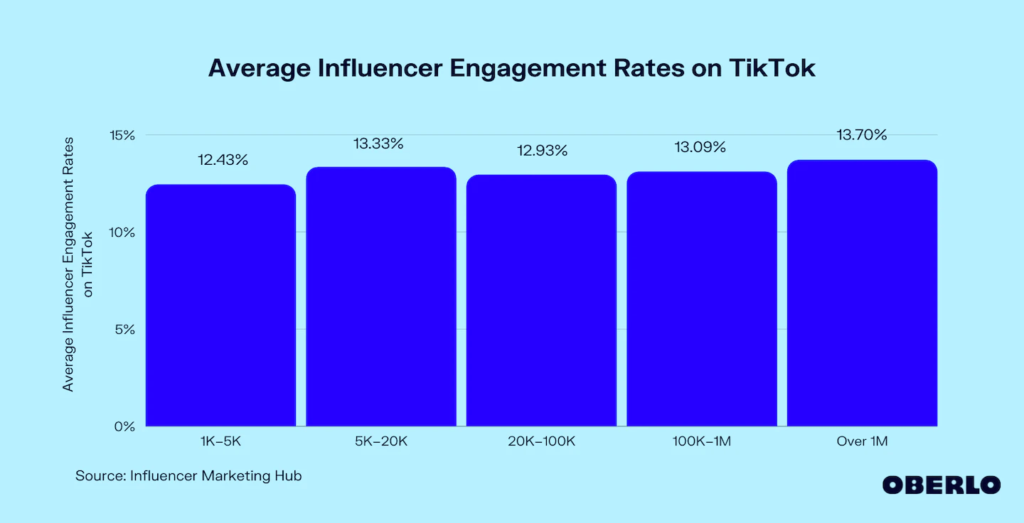
For less money, those with fewer followers could actually help your campaign achieve more engagement and a higher conversion rate.
Engagement rate or reach?
You want both of them. These are the three main qualities to look for when reaching out to micro-influencers for your small business:
- Relevance
- Engagement
- Reach
Are they relevant?
You may have a tattoo artist that engages with your toy company because their kid is a huge fan. But it doesn’t mean they’re right for your micro-influencer campaign. A dedicated following will only work in your favor if your company’s USP (unique selling proposition) aligns with what they’re all about.
Do your research for any background information you can find. Taking some time to do this ensures they’re a good fit. And can help to avoid any potentially awkward situations in future.
Are they engaging?
It’s the reason you’re looking into micro-influencer marketing—high engagement rates. What could be better for brand awareness than accessing a new fan base so closely related to your target audience? Keep an eye on their social media platforms and note down how often they post.
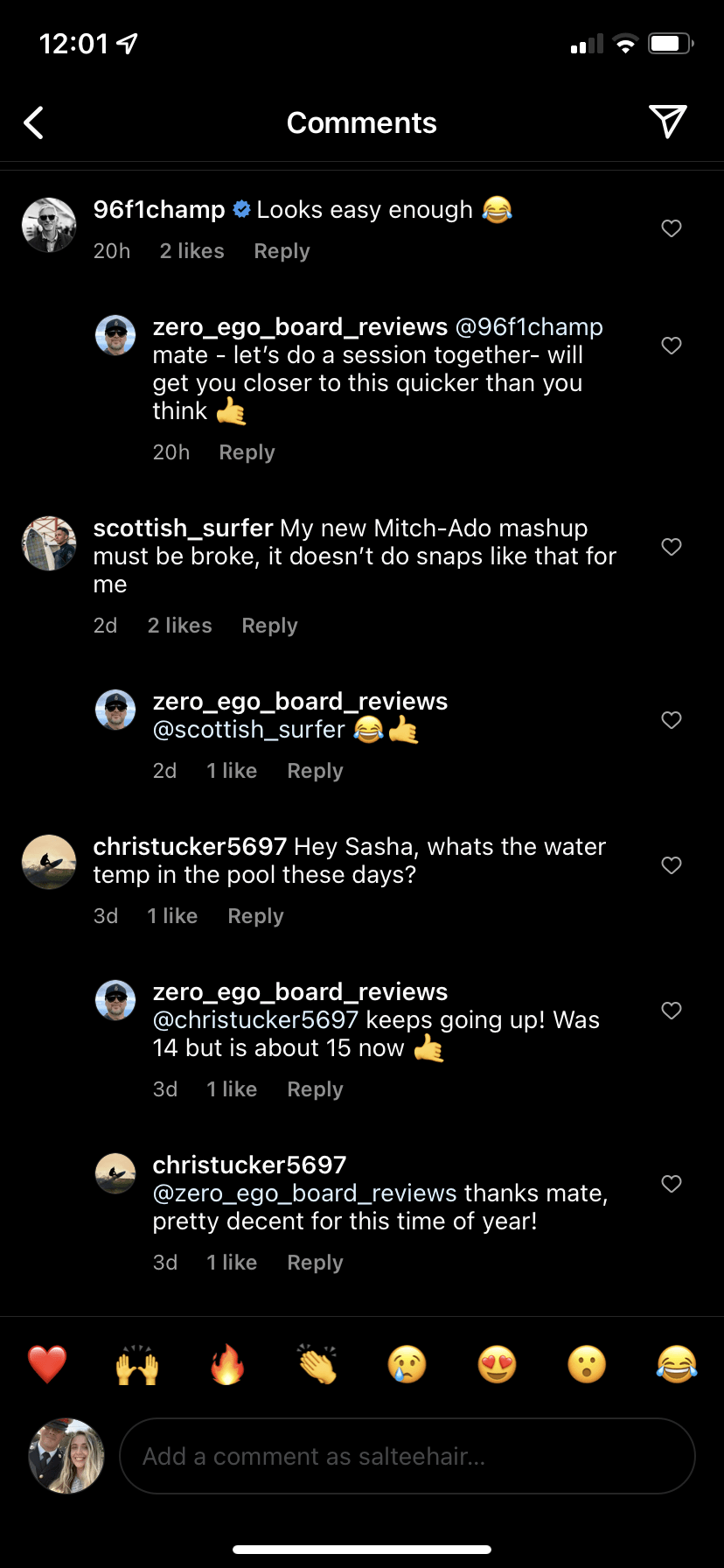
Frequent posting makes them more credible because they’re up to date. Also, check what kind of reaction they get. Likes, comments, and shares are important. But check whether or not they engage back. The micro-influencers with the most impact are always directly communicating with their audience.
Do they have sufficient reach?
If you’ve found several social media users that you feel could work for you, assess their reach. Impressions log the number of times your content is displayed (clicked or not). But “reach” is the number of unique people that physically see your content.

The best influencers aren’t just relevant and engaging. Their solid reach can have a huge impact on your campaign’s visibility.
How to find the right micro-influencers
When crafting your marketing strategy, you’ll find there are lots of micro-influencers out there with different backgrounds. But some shared traits make them all successful.
They’re usually:
- Likable
- Passionate
- Leaders
- Honest
- Authentic
When doing your research, it’s important that you check off each of these. Make sure anyone you’re thinking of working with doesn’t have a large follower count for unsavory reasons.
If you’re a digital marketing novice, here are a few solid places to start your search:
- Your current following
- Keywords/hashtags
- Competitors
- Influencer tools
1. Your current following
You may have micro-influencers backing your brand already and you don’t even know it. Think of all the time you could save trying to convince someone to work with you if they’re already a fan.
There are a couple of ways to do this—depending on how much effort you’re willing to put in to find them.
Manual searching
If you’re a fairly new business, this could be an easy task. If you’re more established, going through 1k+ names on multiple social media networks can be pretty time-consuming. So, how do you cut down the search time? Take a look at the usernames and bios of your follower list and check out those who seem to relate to your industry.
Say hello to wetsuit brand SRFACE who (at the time of writing) have 26.9k followers on Instagram.
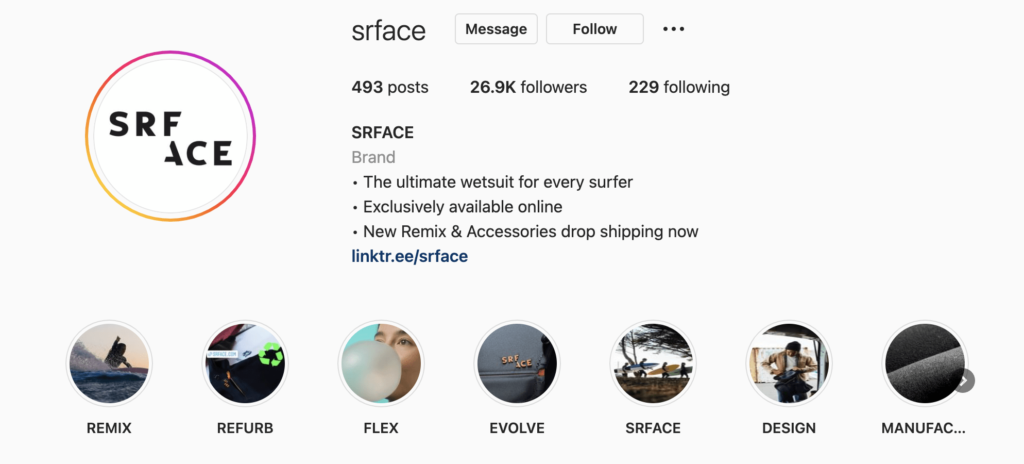
After a quick search through their followers, I found photographer Philly Stokes. With almost 17k followers, her bio shows she’s into surfing and yoga too. There is a clear alignment here between Philly and SRFACE in terms of industry, hobbies and values. She’d probably be a great fit for them to reach out to as a micro-influencer.
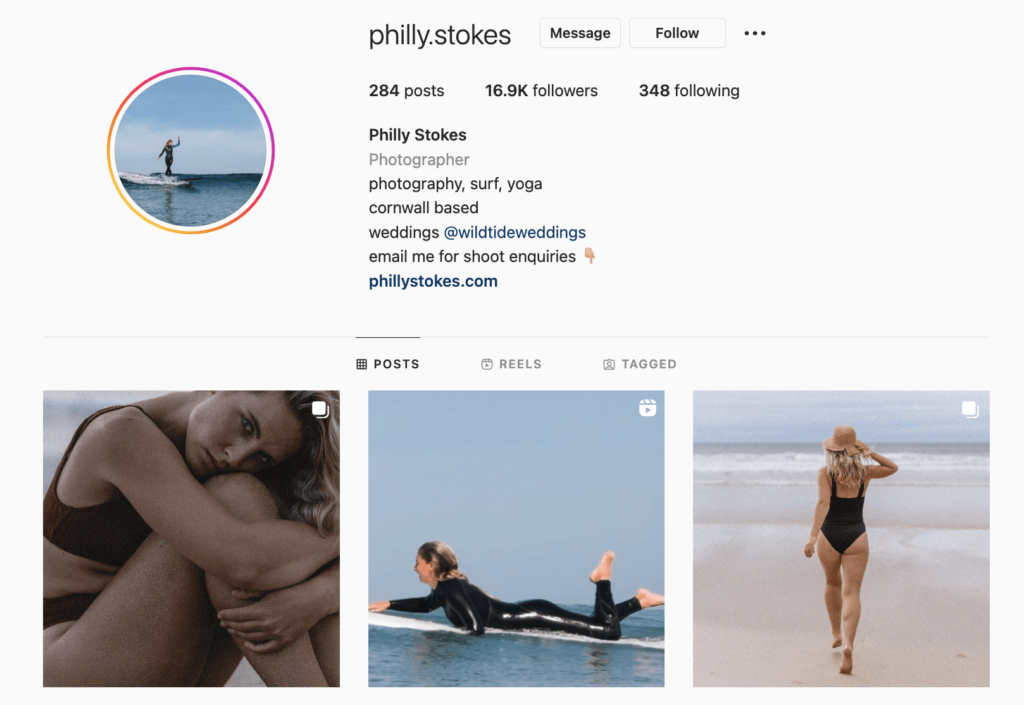
Brand/campaign hashtags
For a surefire way of seeing who’s already talking about your brand, try searching for your business name or a campaign-specific hashtag. In keeping with our previous brand, let’s check out if anyone has used the hashtag #SRFACE on Instagram.
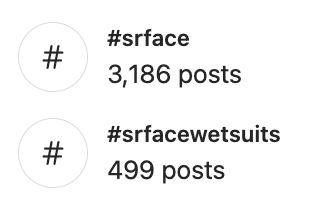
Select one and you’ll be (hopefully) greeted by a selection of shots from Instagram users that are perfect for user-generated content (UGC). Let alone finding micro-influencers.
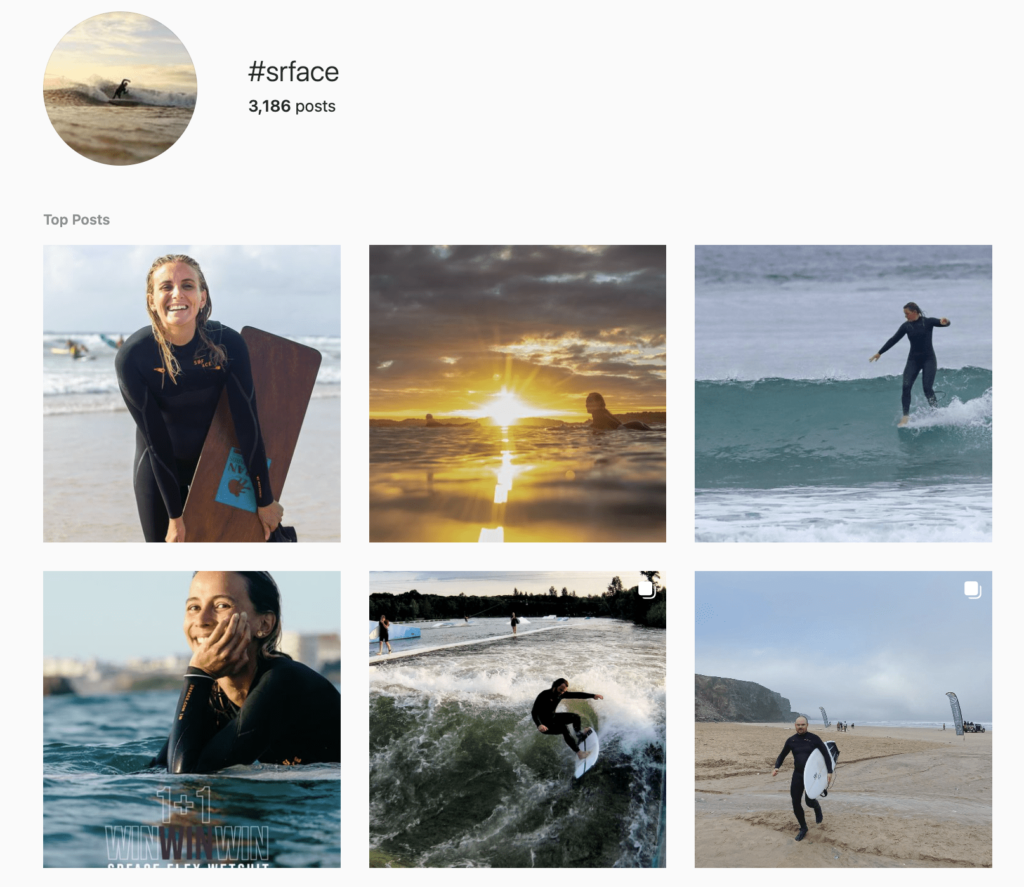
The top posts tend to be those that have the highest engagement/reach. So, they’re a great place to start. Within the first few images, I found a user called Sasha under the tag Zero Ego Board Reviews.
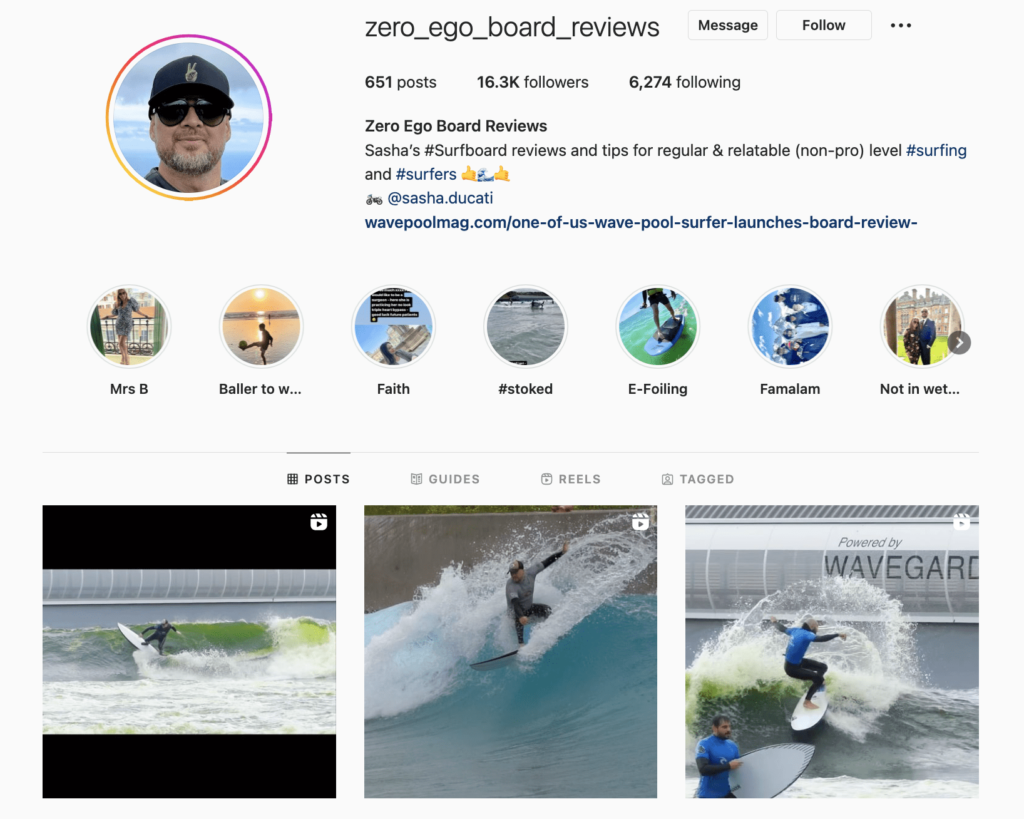
With over 16k followers, he would be another great fit as a micro-influencer for SRFACE. After some digging, it turns out Sasha already has one of their suits. Plus, he’s been given a discount code by the brand to give out selectively to his followers. Great minds, eh?
2. Keywords/hashtags
I hear ya. What if you’re a brand new business and you’ve not got many followers? In that case, you’ll need to widen the net.
Rather than searching for your business name, make a list of associated words from your industry. If you owned a wetsuit brand, you could be searching social media for hashtags and keywords like #surfing, “surfboards” or “surfing tips”.
Enter these words or phrases into Twitter, TikTok, or Instagram’s search bar and discover users with similar terms in their tags or bios. You can even look at the top Tweets and posts and potentially find micro-influencers that way. (Though you’ll probably end up sifting through a lot of irrelevant content.)
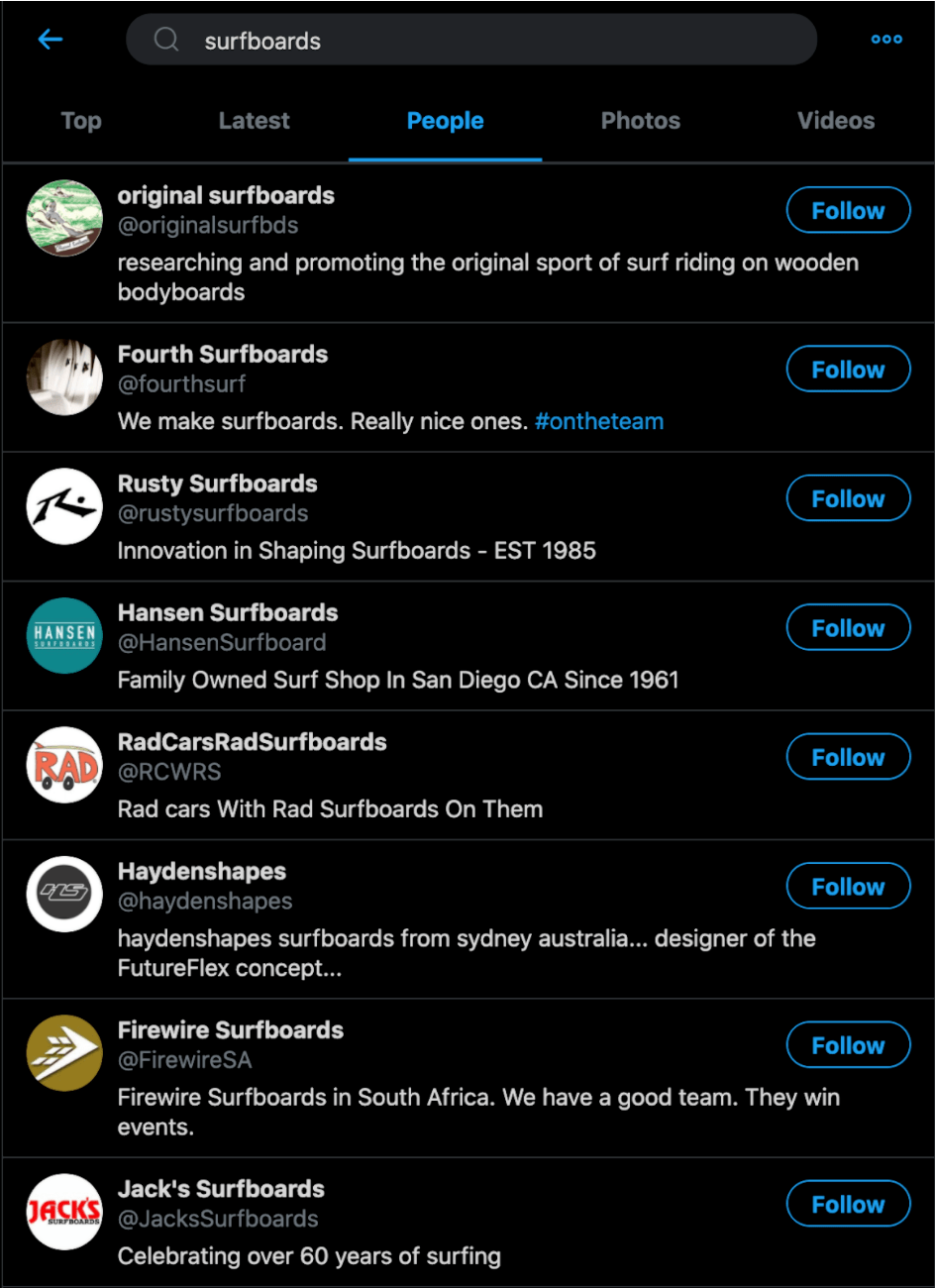
You can generalize your terms or go the other way and pick some more niche elements of your business to filter down. Instagram even helps you out with related searches when you type in a specific hashtag on the platform. Hashtags are not as widely used on Facebook but we’d still recommend giving them a try to find those hidden gems.

This is a more time-consuming way of reaching out to micro-influencers. But you might find someone that’s a great fit that not too many people know about yet.
3. Look at your competitors
Most companies are getting on board with some sort of influencer marketing, so your competitors are likely in the same boat. And you should already have them on your radar for other elements of your marketing strategy.
While SRFACE clearly has awesome products that people are raving about, they’re not yet one of the heavy hitters in the industry. The household names in the wetsuit game are brands like Billabong, O’Neill, Quiksilver, and Rip Curl.
If we take a look at Volcom’s Surf Instagram page, we can easily spot a micro-influencer. You’re looking for anything that doesn’t look like it was taken professionally. Or seems (slightly) less staged.

Here’s an image of a man and his dog. Hashtagged with their current campaign hashtag #TrueToThis.
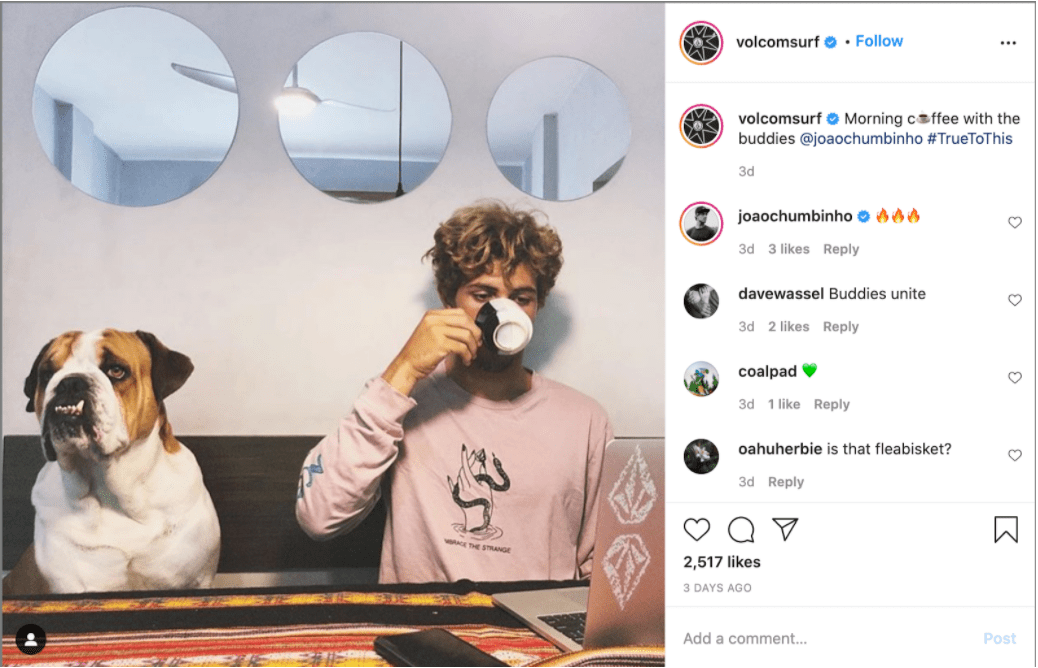
With a little digging, it’s clear João Vitor “Chumbinho” Chianca is a micro-influencer with over 45k followers (at the time of writing).
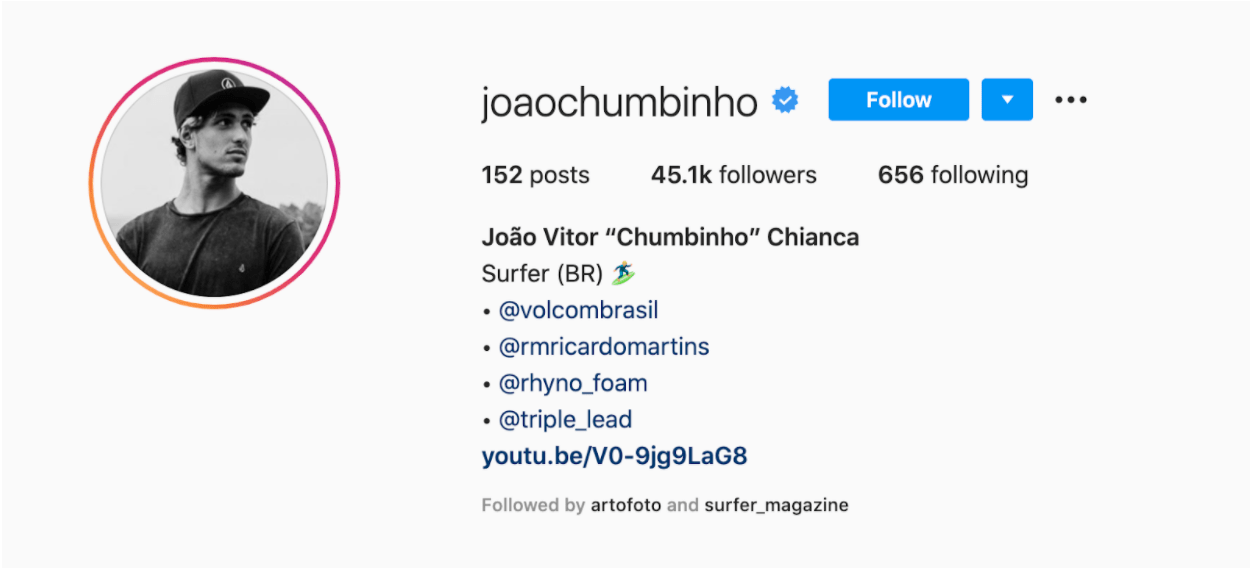
Judging by his bio, he’s already a brand ambassador. But you see why he and Volcom are such a good brand/influencer fit. You can also use the drop-down arrow next to the ‘Follow’ button to see related profiles.

This is another easy way of finding similar users who haven’t already been snapped up. But unless someone’s solely affiliated with a company, there’s no harm in asking if they’d be willing to work with you too.
4. Influencer tools
Sometimes, you just want technology to do the work for you. And luckily, some other humans have invested time to make this possible. So, here are three tools to check out when thinking about reaching out to micro-influencers:
- Julius
- Upfluence
- TRIBE
Julius
Julius lets you discover influencers based on customized searches across Instagram, Facebook, YouTube, TikTok, Snapchat, Pinterest, Twitter, and Twitch. Their research team has to manually input all the information, so you’ll only see vetted influencers that can make a true impact.
After that, you can filter down to only see digital influencers (instead of celebrities.) Then it’s time to get more specific with location, topic, and age. Once you’re done, save relevant influencers to lists for easy browsing. There are tons of analytics to browse surrounding activity, reach, engagement, and audience. So, you can base your choices on solid data.
Upfluence
Upfluence promises to handle every aspect of your influencer marketing campaign. From the initial research stages to campaign results. They start by gathering your network data and identifying your current followers with micro-influencer potential. This could unearth customers who have a large following but don’t consider themselves influencers.
We’ve covered looking at your social media following in an earlier step but this automated method will be a massive time-saver and guarantees you don’t miss anything. You can choose to combine this information with your website’s purchase data to ensure you partner with the most “organic ambassadors who will authentically promote your brand”.
You can also track all affiliate sales and use the in-built social listening tool to monitor hashtags and mentions.
TRIBE
If you’re on a tighter budget, TRIBE lets you pay per use. Their engaged community of creators are matched to your brand, audience and objectives. You don’t have to reach out to micro-influencers here. Once you launch a campaign, creators will pitch their tailored ideas straight to your inbox. So, you can get a feel for working with someone before you commit.
TRIBE scales with you, letting you manage all the creators you work with in one place. They deal with everything—from product sampling to legal issues and payments. Dedicated staff are also available throughout to answer any questions you may have. Plus, you can pick from various plans depending on your budget.
How to reach out to micro-influencers
You’ve found someone you’d like to work with. Now you’ve got to convince them that they like you enough to work with you too. If you’ve found your micro-influencer from one of your social media accounts, this part should be a breeze.
If you’re not doing so already, follow their social media channels and engage with their content. Curate their work, reply to their tweets, and start conversations. If they’re a blogger, don’t forget to comment and share posts from their personal website too.
Once you’ve done this for a while (and had some back-and-forth communication), try sending them an email. It’s a bit more professional than sliding into their DMs.

If their email address is easily accessible, great. Otherwise, you may need to do some digging. Start by checking if they have a LinkedIn account. Then see what you can find on Google. If not, you may have to resort to asking for their details in a comment or Tweet.
What are the goals of your email?
When writing your email, it’s important to know your goals. You’re likely to only get one shot at reaching out to a micro-influencer, so keep the following in mind:
- What do you want out of this? Are you looking to raise brand awareness or boost sales?
- How can you tailor this email to show you’ve done your research and think they’d be a perfect fit for your brand?
- How do you want to collaborate with them? Are you requesting a quick Instagram post, to guest star on your podcast, or to partner for a giveaway?
It pays to remember that brands and influencers can have a large following on one network and very little on another. So take this into account when you’re planning any form of social media marketing.
Personalize your email, create a catchy subject line, and remember to keep in mind what you can do for them. Not the other way round. You’re looking to hit that sweet spot between cool and complimentary. So keep it genuine.
Conclusion
My most important piece of advice (once you’ve reached out to micro-influencers) is let them be creative. Their niche audience follows them for a reason. They know what they’re doing and what their followers like.
It can be tempting to relay your dos and don’ts, but if you want to avoid souring the relationship, you need to place some confidence in them.
Consumers are moving away from the “perfect life” illusion of social media influencers and are craving something closer to everyday life. You’ve chosen this person (or these people) for a reason and their audience trusts them. So, let them do their thing.
This concludes our journey of learning how to reach out to micro-influencers for your small business. Who are you going to reach out to and why? Let us know in the comments.
